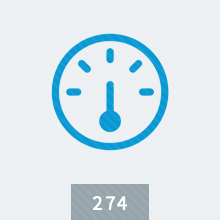This course covers force, stress, and strain and explains the operation of strain-gauge systems. Relates weight to mass and scales to balances. The online course explains the operation of load-cell scales. Describes belt-scale, nuclear-scale, and weigh feeder operation. Covers position measurements by means of proximity detection, air gauging, LVDT gauges, synchros, code disks, and other devices. Explains machine tool control and accelerometer operation. Describes the measurement of angular velocity and acceleration, vibration detection, and machinery balancing. This course has no prerequisites. Force, Weight, and Motion Measurement is available in online technical training and course manual formats.
Lesson 1 - Force, Stress, and Strain
Topics:
Units of force; Static forces; Elasticity; Strain gauges; Gauge factor; Gauge configurations; Other force-measuring devices
Learning Objectives:
– Define force, stress, strain, and deformation in terms of the English and SI units used for their measurement.
– Describe the relationship between stress and strain (Hooke's law).
– Describe the operation and construction of various kinds of strain gauges.
– Identify the electrical circuits used with strain gauges.
– Describe the piezoelectric effect and the capacitance mat and discuss typical applications.
Lesson 2 - Weight and Mass Measurement
Topics:
Weight vs. mass; Acceleration; Spring scales; Balances; Load cell scales; Hydraulic, LVDT, and pneumatic load cells; Batch scales
Learning Objectives:
– Define and compare weight and mass, including SI and English units.
– Explain the relationship between a mass and the acceleration of that mass.
– Discuss Newton's first law of motion.
– Describe spring scales, equal-arm balances, and unequal-arm balances.
– Discuss the operating principles governing load cells.
– Describe the operation and application of industrial batch scales.
Lesson 3 - Weighing Materials in Motion
Topics:
In-transit weights; Belt-scale systems; Roller scales; Nuclear scale operation; Radiation detectors; Weigh feeders
Learning Objectives:
– Name the parts of a belt scale and explain how a typical belt scale operates.
– Discuss the use of roller scales.
– Describe the scale comparison, calibration chain, and electronic integrator methods of calibrating in-transit scales.
– Explain how radiation detectors work and describe the operation of a nuclear scale.
– Describe how continuous weigh feeders operate and discuss typical applications.
Lesson 4 - Position Measurements
Topics:
Micrometers; Dial indicators; Potentiometers; Tracer systems; Variable-reluctance transducer; Proximity detection; Air gauging; Moving-coil transducer; LVDT gauge; Inspection gauging
Learning Objectives:
– Describe how micrometers and dial indicators are used to gauge an object and to make a position measurement.
– Explain how precision potentiometers, tracer systems, variable-reluctance transducers, and proximity detectors measure linear position.
– Describe how air gauging is used to measure inside and outside diameters.
– Discuss the operation and uses of LVDT gauge heads.
– Explain how typical rotary potentiometers, synchros, and code disks converters operate.
– Discuss applications for extensometers and full-field devices.
Lesson 5 - Acceleration, Vibration, and Shock
Topics:
Speed vs. velocity; Radar devices; Machine tool control; Linear and angular acceleration; Accelerometers; Vibration; Balancing machinery
Learning Objectives:
– Compare speed and velocity and calculate speed from distance and time.
– Explain how the accelerometer works.
– Contrast direct and indirect speed measurement and give examples of each.
– Discuss the operation of LVDT, potentiometric, and piezoelectric accelerometers.
– Describe the undesirable effects of vibration and discuss ways of preventing them.






